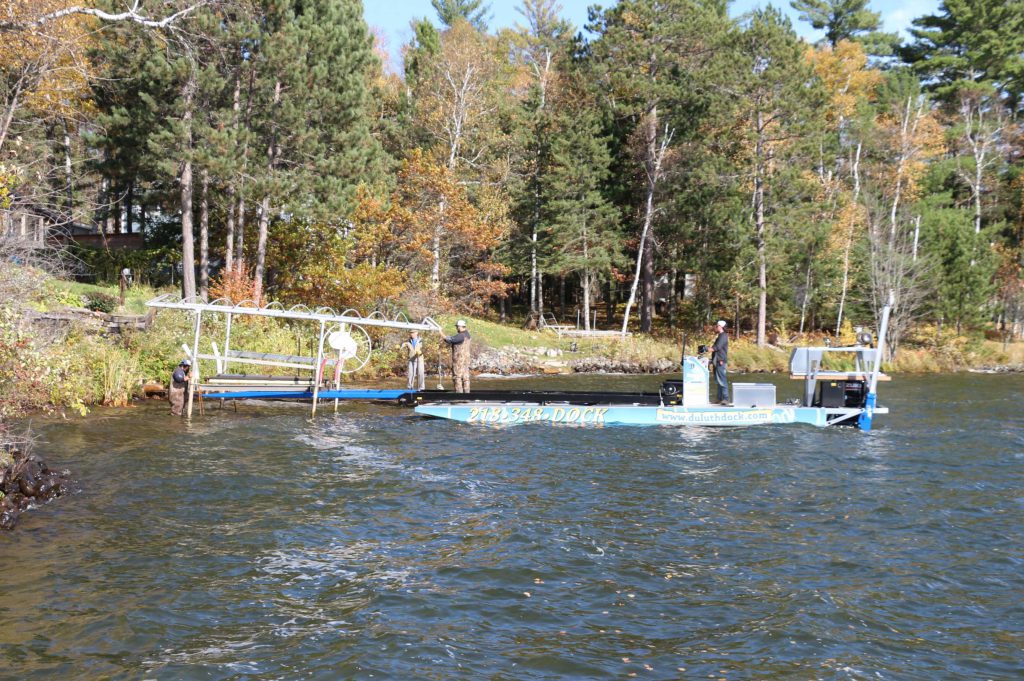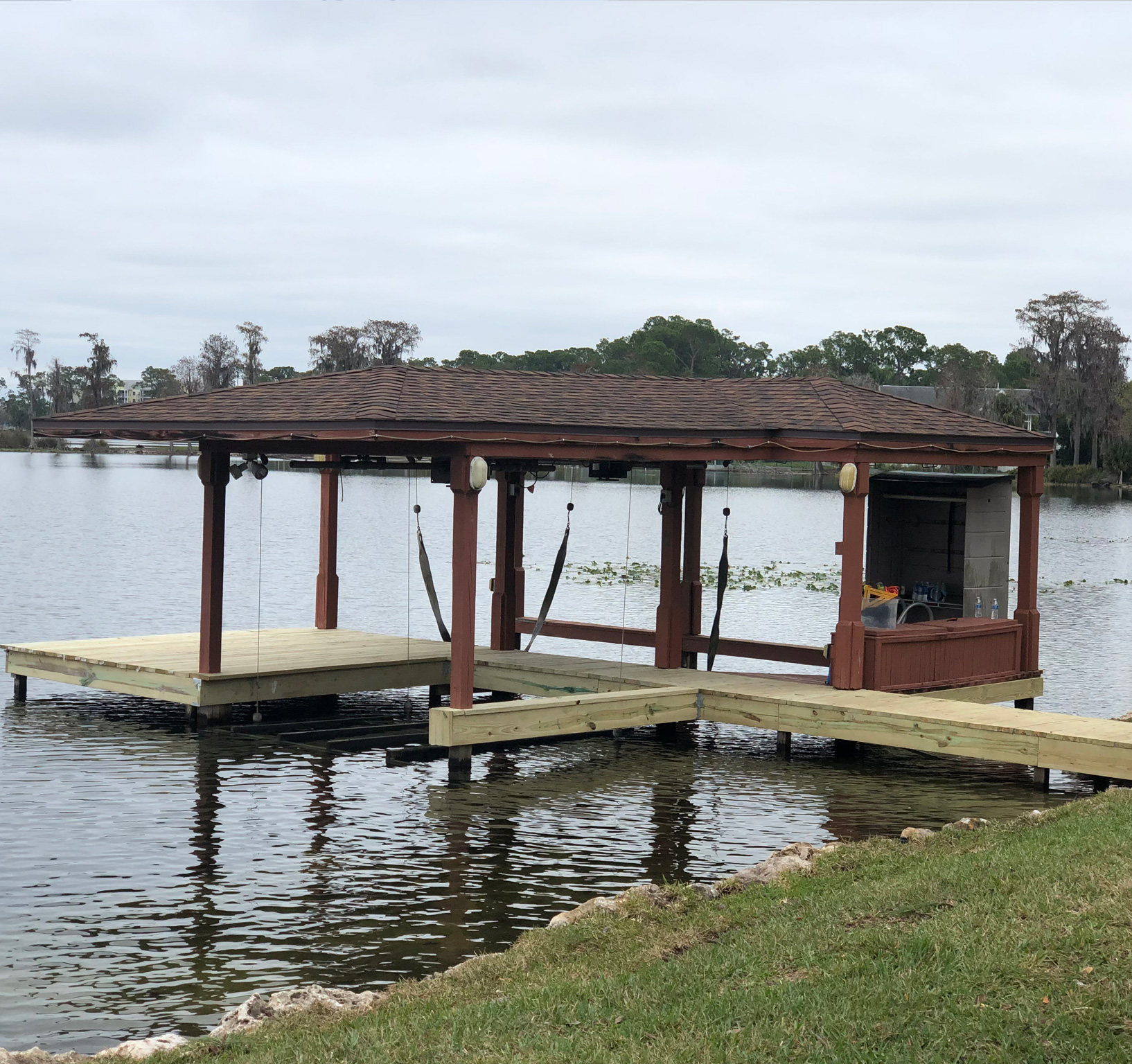Reliable Dock Repair Techniques: Guaranteeing Architectural Stability
Ensuring the architectural honesty of docks through effective repair service strategies is vital for the long life and security of aquatic facilities. Subsequently, picking the appropriate fixing products, such as composite products and corrosion-resistant alloys, is essential for resilience.
Analyzing Dock Damages
Assessing dock damages is a crucial very first step in making certain the structural honesty and safety of any kind of docking center. Key aspects to take a look at include the dock's structure, pilings, outdoor decking, and equipment (Dock Repairs).
Architectural designers or certified assessors usually perform these assessments using specialized strategies and tools. For example, undersea assessments might employ finder devices or remotely ran lorries (ROVs) to identify immersed damage. Above water, visual assessments are complemented by using moisture meters and various other diagnostic tools to discover underlying concerns not immediately visible to the naked eye.

Finding Repair Work Products
Choosing the ideal repair products is a critical action in the dock remediation process, one that directly affects the durability and performance of the repaired framework. Material option need to be driven by factors such as ecological conditions, load-bearing requirements, and compatibility with existing dock parts. Wood is a conventional option for anchors due to its natural resilience and visual appeal. Choosing the appropriate kind of timber, such as pressure-treated lumber or normally rot-resistant varieties like cedar or teak, is vital to stand up to water settings.
In enhancement to wood, composite materials are significantly popular as a result of their longevity and low upkeep demands. Compounds, normally made from a blend of plastic and wood fibers, use superb resistance to rot, pests, and UV damage. For metal docks, choosing corrosion-resistant alloys such as galvanized steel or marine-grade aluminum is vital to prevent corrosion and guarantee structural honesty in saline water conditions.
Epoxy resins and marine-grade sealants are indispensable for repairing cracks and sealing joints, offering a waterproof obstacle and improving the dock's overall toughness. By meticulously choosing premium products, dock repair work can attain resilient outcomes, thereby protecting versus future degradation and guaranteeing risk-free, trustworthy usage.
Architectural Support Techniques
Reliable structural reinforcement techniques are important in guaranteeing the security and long life of dock repairs. One essential method involves using steel or composite support bars (rebar) within concrete structures. Rebar supplies added tensile toughness, protecting against cracks and dispersing loads much more equally. This method is especially reliable for anchors revealed to heavy tons or harsh ecological conditions.
An additional necessary technique is the application of fiber-reinforced polymers (FRP) These materials supply high strength-to-weight proportions and outstanding resistance to corrosion, making them ideal for reinforcing concrete or wood anchors. FRP can be applied in sheets or strips and bound with epoxy resins to improve architectural integrity.
Bracing and securing systems additionally play a critical function in structural reinforcement. Cross-bracing, utilizing metal or wood light beams, can counteract side forces, lowering swaying and activity. Anchoring systems, such as helical piers or driven heaps, provide a steady foundation by moving loads to deeper, a lot more secure soil layers.
Finally, the assimilation of load-distribution plates can help distribute weight more evenly across the dock's surface area, mitigating local anxiety factors. These techniques collectively make certain that docks stay durable and risk-free, with the ability of standing up to useful source the roughness of their operational setting.
Advanced Repair Work Methods

Another innovative strategy includes underwater welding, which permits repair services to be performed without the requirement to dewater the area. This approach is particularly advantageous for resolving architectural issues in immersed dock components, making certain very little disruption to procedures. Improved welding techniques, coupled with robotic systems, supply accuracy and dependability, thereby prolonging the life expectancy of the dock.
In addition, cathodic protection systems are applied to stop rust in metal dock frameworks. By utilizing sacrificial anodes or satisfied current systems, these methods efficiently alleviate the electrochemical processes that lead to product damage.
Last but not least, progressed monitoring innovations, such as structural health and wellness tracking (SHM) systems, offer real-time data on the condition of dock structures. These systems enable positive upkeep and prompt treatments, eventually making sure go to my blog the long-term structural honesty of the dock.
Maintenance and Prevention
Upkeep and avoidance are basic concepts that underpin the long life and security of dock structures. Regular examinations are paramount, permitting very early detection of damage, prospective weaknesses, and ecological effects. An aggressive technique, involving routine look for deterioration, rot, and structural changes, mitigates expensive fixings and prolongs the dock's operational life.
Preventive actions need to consist of using safety finishes to metal components to protect against corrosion and using treated wood to resist degeneration. Furthermore, ensuring proper water drainage and air flow can protect against water buildup, which is a common reason of architectural deterioration. Including high quality products and sticking to manufacturer guidelines throughout building and construction and repair service phases also play vital roles in improving durability.

Training employees in dock maintenance ideal practices makes certain browse around this site consistent application of safety nets. Leveraging technical advancements, such as drones for examinations and sensors for real-time monitoring, can further improve maintenance efforts. By prioritizing maintenance and avoidance, dock proprietors can ensure structural honesty, operational security, and economical administration over the dock's life-span.
Conclusion
In verdict, maintaining the architectural stability of aquatic facilities requires comprehensive dock repair strategies. Advanced repair work techniques, combined with normal maintenance techniques, guarantee the dock continues to be operational and risk-free under diverse ecological problems.
Making certain the structural integrity of anchors through efficient repair techniques is vital for the long life and safety of marine facilities.Selecting the proper repair service materials is a pivotal step in the dock repair procedure, one that straight influences the durability and efficiency of the repaired structure.Reliable structural support strategies are crucial in guaranteeing the stability and longevity of dock fixings. By focusing on upkeep and avoidance, dock proprietors can ensure structural stability, functional security, and cost-effective monitoring over the dock's life expectancy.
In conclusion, preserving the architectural honesty of marine centers requires thorough dock repair work strategies.